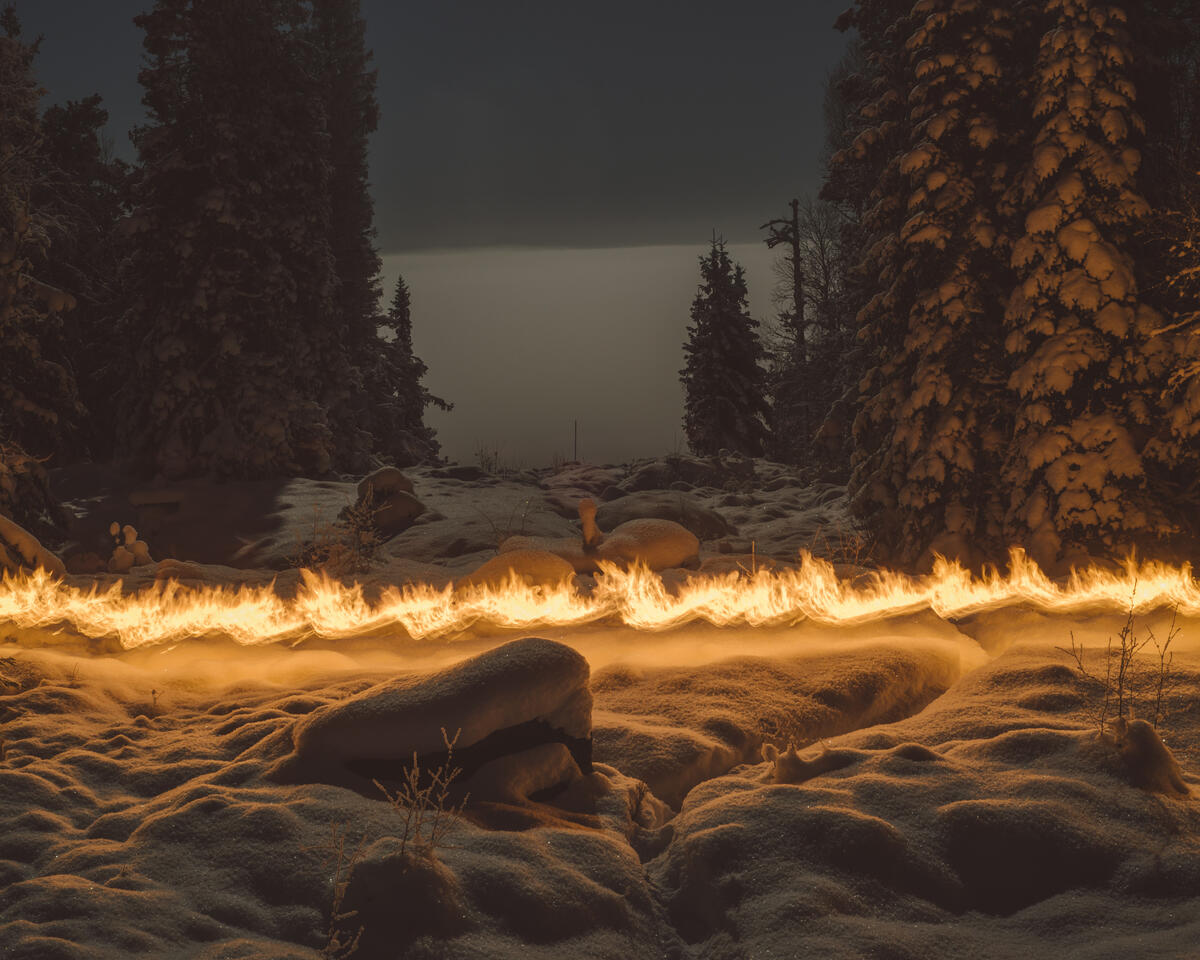- 1/1
© Terje Abusdal, Slash & Burn #9, 2016. Preus Museum Collection.
The series consists of portraits and nature photos depicting imperceptible tracks, animals and burning areas. Abusdal has also included archival photos and illustrations. These include photos taken from the advent of genetic research, historical photos of bloodletting and so-called racial photography.
The Forest Finns are one of Norway’s minority populations. They were settlers who arrived from Finland during the 17th century, mainly from the historical province of Savolax near the Russian border. The Forest Finns engaged in slash-and-burn agriculture and this forms the basis for the title of Abusdal’s Slash & Burn project.
This farming method involves burning down part of a forest and then cultivating the nutrient-rich, freshly burnt soil. Slash-and-burn agriculture was area-intensive and was therefore regarded as being a problem as the economic value of the forests increased. The Forest Finns' understanding of nature was based on Eastern shamanic traditions, magic and mysticism. In the 1800s many of them were assimilated and subjected to Norwegianisation. Their language died out, but their culture lives on today in the area’s place names, craft traditions and music.
Abusdal's project raises important questions associated with minority populations. Today there are no Forest Finns left who are engaged in slash-and-burn agriculture. They do not speak Finnish and nor do they live in smoke houses. One could be forgiven for thinking that they no longer exist. Abusdal takes a trip down memory lane through a culture which has more or less been eradicated. Like Gjert Rognli, he has expressed the shamanic legacy of the Forest Finns in photos that bridge the gap between reality and fiction.
Aron Schuman, a photographer and author, compares the project to slash-and-burn agriculture, with Abusdal’s work creating a new fertile layer which allows the growth of new understandings and cultural identity. Despite the fact that Abusdal is not part of this culture, he succeeds in visualising the culture and natural perspectives of the Forest Finns through his presence and sense of wonderment.
This text has been taken from an essay written for the exhibition catalogue by Christine Hansen, the co-curator of the exhibition.
This farming method involves burning down part of a forest and then cultivating the nutrient-rich, freshly burnt soil. Slash-and-burn agriculture was area-intensive and was therefore regarded as being a problem as the economic value of the forests increased. The Forest Finns' understanding of nature was based on Eastern shamanic traditions, magic and mysticism. In the 1800s many of them were assimilated and subjected to Norwegianisation. Their language died out, but their culture lives on today in the area’s place names, craft traditions and music.
Abusdal's project raises important questions associated with minority populations. Today there are no Forest Finns left who are engaged in slash-and-burn agriculture. They do not speak Finnish and nor do they live in smoke houses. One could be forgiven for thinking that they no longer exist. Abusdal takes a trip down memory lane through a culture which has more or less been eradicated. Like Gjert Rognli, he has expressed the shamanic legacy of the Forest Finns in photos that bridge the gap between reality and fiction.
Aron Schuman, a photographer and author, compares the project to slash-and-burn agriculture, with Abusdal’s work creating a new fertile layer which allows the growth of new understandings and cultural identity. Despite the fact that Abusdal is not part of this culture, he succeeds in visualising the culture and natural perspectives of the Forest Finns through his presence and sense of wonderment.
This text has been taken from an essay written for the exhibition catalogue by Christine Hansen, the co-curator of the exhibition.
